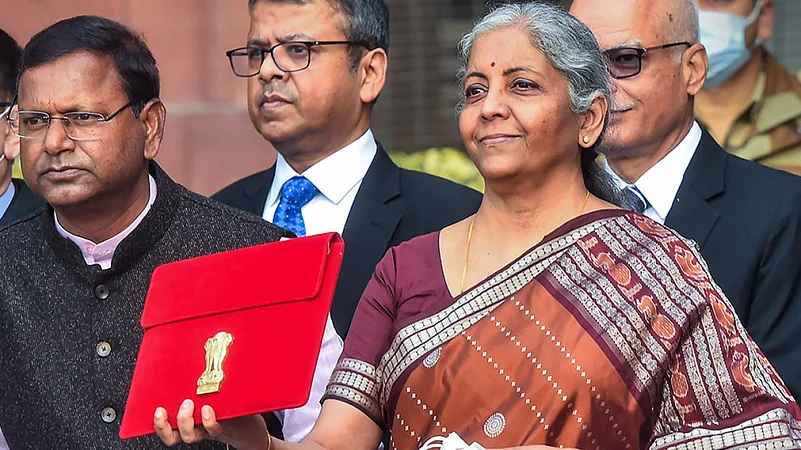A common man’s budget speech would look like this.
We have the worst of challenges to address and I present the budget with this backdrop. There is a realization that mere budget-based planning will not save India, so we must follow a 25-year vision.
• Last year, we had announced a free ration to 80 crore people, as more than 57% of our population cannot afford two meals. This is the biggest challenge of the ‘missing middle-class’; the buyers of ‘Make in India’ products. So, we will ensure we create ‘customers for make in India products’ with purchasing power to make India a middle-income country by 2030 and a developed nation by 2047.
Advertisement
• The national debt of India has increased from US$ 1.4 trillion in 2016 to US$ 2.35 trillion in 2020, in 2026, it will be US$ 4.43 trillion. So, by 2027 instead of becoming a US$ 5 trillion economy, we will have US$5 trillion debt. In this budget, you will see that 20 paise goes to interest payments for every rupee I spend. Despite doubling the national debt in the past few years, the growth is missing, and our nominal GDP per capita has declined by 10 % since 2019. Our economic model needs restructuring.
• The fiscal deficit is a massive challenge! Our gross tax revenue and non-tax revenue adds up to Rs.30.28 lac crore and the total expenditure is Rs.39.45 lac crore. I estimate a 30% fiscal deficit.
Advertisement
• 8.5 lac Indians have left India in the past seven years. The bureaucratic and judicial system drags India. We failed to deliver what Sardar Patel promised, ‘No one would die of starvation in independent India. And finding justice would neither be costly nor difficult’. We will do our best to ensure ‘frustration-free citizens.’
• We are surrounded by an expansionist China and the world’s terrorism capital - Pakistan. We must always be war ready. We need to invest in defence that no one should encroach on our territory or sovereignty.
• We have focussed on industrialization. So, we created PSUs, industrial houses, and world-class IITs and IIMs. In absence of holistic development people once educated in India left for the developed world.
India has a demographic opportunity but not a demographic dividend as we never invested in it. In terms of labour productivity, India is ranked amongst the lowest in ASEAN. We will invest substantially to boost productivity and overall competitiveness.
This budget will ensure that we create an India where a citizen every day wakes up in a land of massive opportunity and happiness. So, the key announcements today include:
• Shift the focus from a small number of large companies to a large number of small companies.
• Initiate a distributed growth model and set up an Employment Agency to analyse the district’s needs and forecast the businesses it can support.
• Invest massively and create ‘smart, innovative, green and viable economic zones’ outside metros.
• Make significant investments in culture tourism and creative industries, as they will remain the highest job creator for the youth.
• Conventional universities will cease to exist in the future, and hence, we will allow hybrid and digital universities with on-job internship models.
• Invest 3.0 percent of our GDP in innovation and research to ensure the country has a cutting edge in science & technology to become the world’s most innovative nation. We will create a ‘Ministry of Innovation’ with a cabinet rank minister.
• Divestments and selling assets will leave nothing for the future. Hence, all PSU holdings, offset clause deals, land banks will be transferred to Sovereign Wealth Fund. This will be tasked to create returns for the long-term Capex needs.
• We want you to have more money to spend to ensure growth. It is essential to reduce taxes and enhance tax slabs, and I don’t want you to feel that I am a tax collection minister who keeps boasting of increased tax collections in every budget.
• The ‘Cost of job creation’ reveals that a percent increase in GDP creates 7.5 lac jobs and it cost an average of Rs.3.0 Lac to create a job. For creating 1.2 crore jobs annually, we either need to grow by 16% or invest Rs. 3.6 lac crore every year. Under ‘Mission 25 crore Households’, every household will have a job or an entrepreneurship opportunity from this mission.
• We will review metro plans for small cities but will create congestion-free roads and the best of green public transport to avoid generating infrastructure and debt bubbles.
I promise not to oversell the Indian story and create a real story of a developed nation. We will present a quarterly progress report and not just work for the growth of the ‘share market’ but for growing India’s market share. One key parameter I will promise is the double-digit growth in GDP per capita. I promise to keep the sanctity of the budget announcements, and If you have doubt that we could not even run Air India, how we will run India? Wait till 2047!
Advertisement
Jai Hind.
Common Man’s Finance Minister
(Prof Rajendra Pratap Gupta is a public policy expert. Tweets at @RajendraGupta . Views expressed in this article are personal and may not necessarily reflect the views of Outlook Magazine)




















